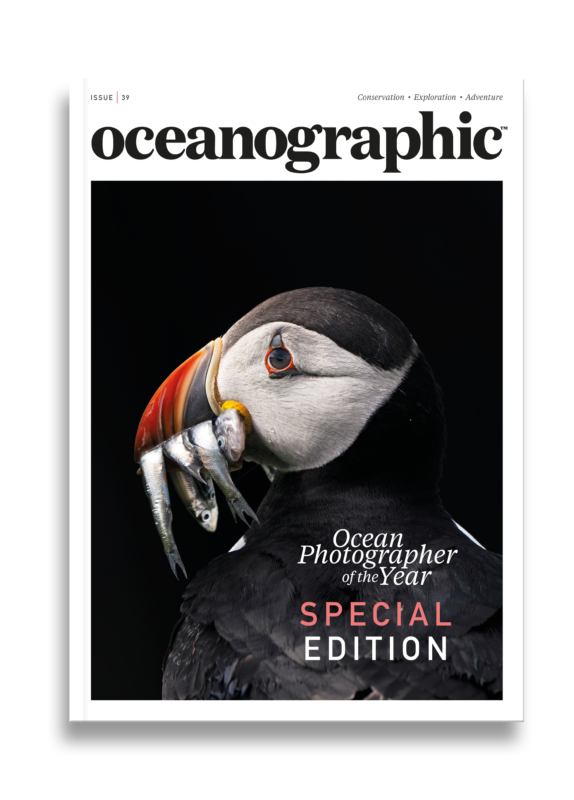EU fishers clock 3,500 hours of bottom trawling in protected waters
A new study published in Science Advances this week reveals that while there has been a hefty reduction in bottom trawling activity in EU waters thanks to recent legislation, vulnerable marine ecosystems are still under serious threat.
It’s been almost ten years since the EU first moved to ban all bottom-trawling activity below 800 metres in waters across the Northeast Atlantic; and while it’s a ban that has led to a hefty reduction in such bottom contact fishing within the region, the problem still persists.
The Deep-Sea Access Regulation was first adopted in 2016 and came into full force in 2017, seeking to safeguard some of the Northeast Atlantic’s most biodiverse but fragile habitats, including seamounts teeming with cold-water corals and sponges across what were designated vulnerable marine ecosystems (VMEs).
In November 2022, the European Commission closed 87 areas (between 400 and 800 metres depth) of European waters to bottom-trawling fishing entirely, fully implementing one of the key provisions of the 2016 regulation.
While these protections have been vastly successful in reducing fishing activity – according to the latest study by some 81% – researchers and scientists are campaigning around the activity that still persists today.
A new open-access study published in Science Advances this week has revealed that while there has been a hefty reduction in bottom-trawling in these areas between November 2022 and October 2023, the fact remains that some 3,500 fishing hours have been logged during that timeframe alone, following the closures.
While the drop from 19,000 hours the year prior has been hailed as “encouraging”, the study raises concerns over the ongoing threats to vital and vulnerable ecosystems presented by the continuation of some bottom contact activity.
Dr Lissete Victorero, lead author and researcher for the Deep Sea Conservation Coalition (DSCC), said: “In this study, we present independent analysis of bottom-fishing activities within the EU’s closures of VMEs. Our findings suggest that while the 2022 closures have achieved an encouraging reduction in fishing activity, continued bottom-contact fishing within these fragile habitats reveals gaps in compliance and enforcement.
“These closures are an essential step in protecting some of the ocean’s most vulnerable ecosystems, but ensuring their long-term success requires further mapping and protection of VMEs in EU waters and stricter adherence to regulations.”

On deeper analysis of the data, the study has found that of the 3,500 hours of post-closure bottom contact fishing that took place in the time period, Spanish vessels clocked the most activity, responsible for 1,769 hours. This was followed by the Portuguese fleet which, equipped with bottom trawls, appear to have engaged in “significant bottom trawling activity” by repeatedly targeting a VME closure on the West Iberian Shelf.
Despite the protective measures afforded to this area, it endured over 500 hours of fishing effort.
The study goes on to note that tactical fishing activity, such as short, quick fishing incursions – such as those made by the Spanish fleet – could go unnoticed by vessel monitoring system data, underscoring the “need for EU States to enhance and coordinate surveillance and monitoring of their fleets” to ensure a fisheries management that is more effective.
The study calls for the use of automatic identification system data alongside vessel monitoring data for a more transparent view of fishing activity to better deliver on the protection of these VMEs and fulfil international commitments to protect the ocean.
Also highlighted in the paper were the significant levels of bottom contact fishing in many areas of EU waters where VMEs had been identified, but currently remain unprotected due to drawn-out political spats.
Despite this, there is cause, Bronwen Golder, global seamounts campaign director at DSCC has suggested, to “celebrate the leadership the EU has shown in protecting deep-sea ecosystems.” The high levels of compliance with the regulation provides a “strong indication” that EU Member States are taking calls to protect such VMEs seriously.
The DSCC is now calling on the EU to continue with the implementation of the Deep-Sea Access Regulation and – as a priority for 2025 – adopt new closures that will provide stronger protection for other VMEs within EU waters.
Click here for more from the Oceanographic Newsroom.


"*" indicates required fields
Printed editions
Current issue
Back issues

Back Issues
Issue 39 Special Edition: OPY2024

Back Issues
Issue 37 Wild Alaska: River & Ocean
Enjoy so much more from Oceanographic Magazine by becoming a subscriber.
A range of subscription options are available.








